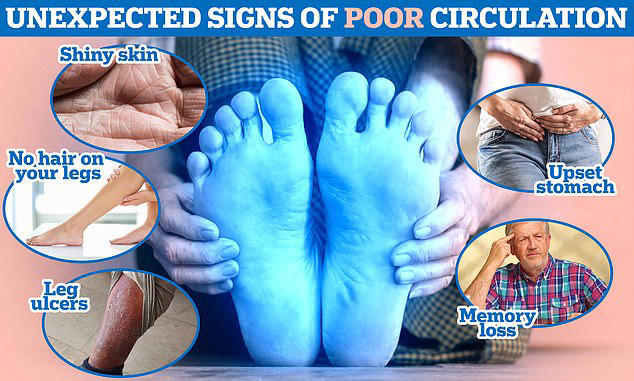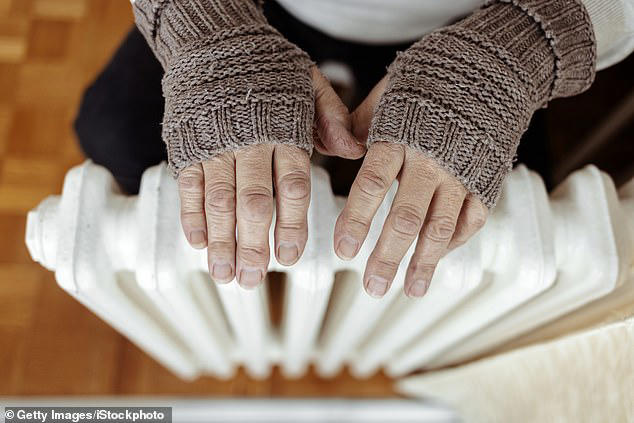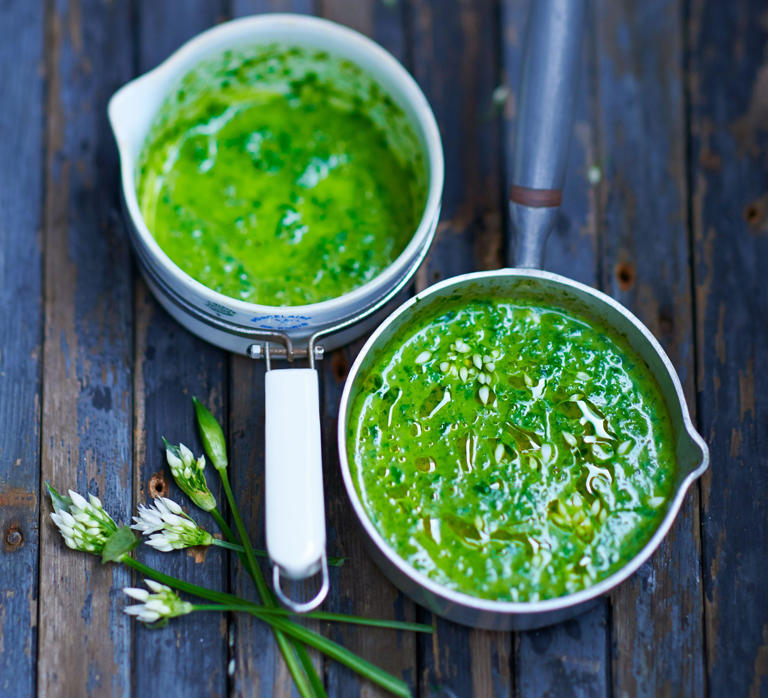6 physical symptoms of anxiety you shouldn’t ignore, according to experts
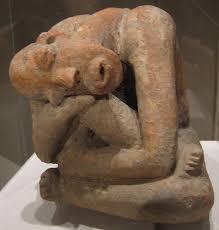











6 physical symptoms of anxiety you shouldn’t ignore, according to experts

Anxiety is a tricky foe, mainly because it can be so challenging to identify. You may feel irritable, tired, restless, and simply out of balance, according to David Merrill, M.D., Ph.D., a psychiatrist at Providence Saint John’s Health Center in California.
To make things even more confusing, physical symptoms usually pop up in addition to emotional ones—and often, until you get a proper diagnosis, it may feel like you’re fighting a cold, flu, allergies, or even a hangover.
If you are concerned about your mental health, book in to see your GP. You can also ring the Mind infoline, on 0300 123 3393
That’s because the brain-body connection is very strong, and what might seem like unrelated mental and physical conditions could actually be intricately linked in an ongoing cycle, Dr. Merrill says. For example, anxiety could cause digestive problems, and those effects could, in turn, worsen your anxiety.
That notches both problems up unless the issue is recognized and addressed. Here, some clues that your body is manifesting anxiety in physical ways—and what you can do to feel better, ASAP.
1. Rapid heart rate
Anxiety is part of the body’s built-in alarm system, alerting us to danger in the surrounding environment, according to Joseph Laino, Psy.D., senior psychologist and assistant director for clinical services for ambulatory behavioral health at the Family Health Centers at NYU Langone Health.
A part of the brain called the amygdala rings that alarm during a perceived threat and it causes a cascade of effects—such as a surge of the hormones cortisol and adrenaline—meant to prep us to flee or fight.
That can increase your heart rate and blood pressure, and even lead to heart palpitations, Dr. Laino says. 'That reaction is essential to our health and preservation, because a surge of anxiety can propel us to move quickly,' he explains. But when that alarm button seems stuck in the 'on' position, it can exacerbate these reactions, which are designed to be temporary.
2. Chills or sweating
As part of the fight-or-flight response, you may experience a sudden temperature change, Dr. Merrill says. That’s because another part of the brain involved in anxiety is the hypothalamus, which regulates body heat.
Because of that, you could have chills, feel drenched in sweat, or weirdly, both at the same time. That effect could also come from the way muscles fire up during an anxiety response, he adds, as one more way to get you ready to take on threats. That’s why you may have odd muscle aches in conjunction with the hot or cold flashes.
3. Shortness of breath
Your heart and lungs work in concert to keep you going strong, so when one is affected, the other is likely to be, too. If you’re experiencing a sudden rise in heart rate, that could lower your oxygen intake and your lungs see that as a tip-off to power up, so they start working harder, Dr. Merrill says.
'This is why, in extreme anxiety—like a panic attack—you’ll not only have a rapid heart rate, but also shortness of breath, and the advice with those is to try and implement deep breathing so that both can get corrected,' he says.
Of course, if you’re having chest pains, the symptoms don’t subside, or it feels worse after a few minutes, seek immediate medical attention.
4. Nausea or indigestion
In addition to the parts of the brain, and certain hormones, being associated with anxiety, the central nervous system plays a major role in the stress response as well, and Dr. Merrill notes that there are more nerve fibers in the gut than anywhere else in the body. That’s why, when you feel excited, you have those butterflies—it’s your nervous system responding to stimulus.
Another hormone, serotonin, steps in here as well, he adds. Most of your serotonin—the 'happy chemical' that send signals between nerve cells—is in your gut as well, and when emotional distress happens, it can throw off your nerve signaling and serotonin response. The result? Belly problems. 'Any kind of emotional imbalance like anxiety is likely to create stomach issues, such as nausea, indigestion, and upset stomach,' he says.
5. Constipation or diarrhoea
As the body prepares to respond to a threat, it shuttles resources like blood flow to what it considers necessary for short-term mobilization. What’s not needed when you’re in the middle of a fight or you’re sprinting away from danger? Digestion.
'As your blood flows toward muscles, vision, and hearing to react to threats, your motility can change,' says Dr. Merrill. That often results in constipation but can also swing in the other direction toward diarrhoea. In some cases, you may toggle between the two. Related effects can include bloating, excessive gas, abdominal pain, and cramping.
6. Tingling, sharp pains, and tightness
Because the central nervous system is connected to the peripheral nervous system, that means you’re wired from head to toe, Dr. Merrill says, and when there’s anxiety in the brain, it sends out signals all along those connections. Much like your muscles, heart, and lungs are prepped for a threat, your nerves fire up to ensure the rest of your body is ready to jump or punch, too.
'Because your nerves are activated, that can create an effect anywhere along those nerve systems,' says Dr. Merrill. 'You may have tingling fingers or toes, for example, or the hairs on your arms stand up like you’re scared.'
If a nerve fires suddenly, there could be sharp pain or tightness as well—especially in areas where the nerves are in tighter clusters, like your lower back, jaw, or neck.
How to deal with your anxiety symptoms
Right now, with stay-at-home orders and extreme economic uncertainty part of the 'new normal,' anxiety levels are very high, even for those who haven’t experienced much anxiety in the past, Dr. Merrill says.
Mindfulness-based practices can help, especially if they involve some type of physical movement that benefits both body and mind. He suggests yoga or tai chi, for example, because they incorporate breath-work in their practices.
In terms of treatment, Dr. Laino suggests talking with your healthcare provider about both your symptoms and anxiety as a possible cause to ensure you’re getting an accurate diagnosis from a trained professional. Even if you’re under a stay-at-home order, there are many telehealth options right now, he adds, which means you can have an appointment and even get a prescription without going into an office.
Most of all, take it seriously. 'Just because a symptom is linked to anxiety doesn’t mean it should be ignored,' he says 'There are various medications and talk therapies that can help people who suffer with acute, chronic, or post-traumatic anxieties.'
Best of all, as your anxiety knots get loosened, it’s likely many of your physical issues will start to ease as well.
Where to find help for your mental health
If you're struggling with your mental health and need help, try these resources:
- Call the Mind infoline, for signposting on where to seek help: 0300 123 3393
- Go to your GP, and explain your symptoms - they can offer you medical help
- You can refer yourself for an online NHS therapy programmes nhs.uk/service-search
- If you just want to talk to someone, call the Samaritans 116 123
Story by Elizabeth Millard: Womens Health Uk
The five warning signs of bad circulation, according to a surgeon
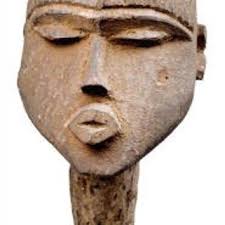











The five warning signs of bad circulation, according to a surgeon
- Bad circulation can cause an upset stomach and hair loss, says vascular surgeon
- The symptoms are seen in people with diabetes, obesity and heart conditions
- Knowing the signs can help avoid extreme consequences including amputation
Cold hands and feet are a common bugbear — and they're also tell-tale signs that you have poor circulation.
But they aren't the only giveaways, experts say.
Here, MailOnline reveals some of the unexpected warning signs, according to a vascular surgeon.
Shiny skin and cold feet
Having cold feet and hands is a well-known sign of poor circulation.
It is caused by blood struggling to get to the extremities due to narrowed blood vessels.
As a result, the hands and feet can feel cold and appear blue or purple when sitting and pale or white when lying down.
Sufferers may also experience numbness or pins and needles in their extremities and pain in their calves when walking.
But shiny and tight skin is a lesser-known symptom that can affect the lower legs and feet of those with poor circulation.
It is caused by the skin deteriorating due to a lack of blood flow.
Although these symptoms may not sound immediately alarming, restricted blood flow can be caused by life-threatening blocked arteries, says Professor Alun Davies, a vascular surgeon and lecturer at Imperial College London and clinical trial lead for the Revitive Circulation Booster.
Medically known as atherosclerosis, blocked arteries are cause by the build-up of fatty material in the arteries and can lead to heart disease a heart attack or stroke.
It can be hard to tell if you are just prone to getting chilly toes and dry skin or if it is a warning sign of something more serious.
But a common tell-tale sign that it is caused by poor circulation is if your body is warm, but your feet are still icy cold.
Professor Davies said: 'Lack of blood flow to the legs is a common cause of cold feet.
'And while some may struggle with pain caused by poor circulation, numbness can be just as bad.
'Pins and needles that come with numbness in the feet can not only be uncomfortable but can also cause balance issues and mask potential foot injuries.'
No hair on your legs
While smooth legs may not seem like a bad thing, it can be a sign of bad circulation.
Unintentional hair loss on the legs can mean not enough blood is getting to those areas, resulting in the hair follicles dying from a lack of nutrients.
'This is more apparent in men with many noticing a clear "sock line" of hair-free skin develop,' says Professor Davies.
He explained this lack of blood flow to the legs can quickly escalate to more dangerous symptoms, such as nerve and tissue damage.
It is vital to get ahead of symptoms by seeking advice from your GP to find out the underlying cause and start treatment.
Left untreated, a lack of blood flow to the legs can cause the tissue to die due to the lack of oxygen and nutrients, according to the Vascular Charity.
This can eventually cause life-threatening gangrene — a type of tissue death — which requires amputation in severe cases.
Leg ulcers
Long-lasting sores that do not heal within two weeks are most likely a sign of poor circulation, experts say.
They usually develop on the inside of the leg, between the knee and ankle, and can cause pain, itching and swelling in the affected leg.
There may also be discoloured or hardened skin around the ulcer, with foul-smelling discharge leaking from the sore.
Professor Davies said: 'These open sores often occur on the lower leg with some presenting with no pain, meaning many consider them harmless.
'Any reoccurring sore or a sore that will not heal should not be ignored and must be treated to avoid infection and further complications.'
Those with medical conditions such as diabetes, high cholesterol and obesity are more susceptible to poor circulation, but it can impact anyone at any age.
People with diabetes also suffer from foot and leg ulcers due to a lack of circulation and nerve damage caused by high blood sugar levels.
Maintaining a healthy diet, staying a healthy weight, and getting a good balance between exercise and resting your legs will help prevent the ulcers from reoccurring, according to the NHS.
Upset Stomach
Bad circulation affects all parts of your body, including your vital organs.
Abdominal pain, diarrhoea and blood in your poo are all unpleasant symptoms that are most often blamed on your last meal or a stomach bug.
But experts say, in very rare cases, these symptoms can actually be a sign of poor blood flow to your digestive organs.
Professor Davies said: 'As with all vital organs, your stomach needs a flow of oxygen-rich blood to function properly.
'Organ failure due to restricted blood flow can lead to digestive problems and lack of appetite due to the metabolism slowing down.'
Memory loss
Feeling inexplicably dizzy, losing your balance and being forgetful are symptoms more commonly associated with a brain injury, tumour or even Alzheimer's.
But it can also be a sign not enough blood is getting to the brain.
If you have bad circulation and a lack of blood is reaching the brain, the organ will start to cut back on certain functions including memory and balance, says Professor Davies.
One simple way to improve your circulation is exercise, according to the NHS.
Movement promotes healthy circulation as your muscles help squeeze your veins which causes better blood flow.
Smoking can also damage your circulatory system as can wearing ill-fitting shoes, the NHS says.
Poor circulation is when blood vessels in your legs become hard or narrow.
As a result, blood flow to the feet and legs become reduced, stopping vital nutrients and oxygen reaching your soft tissues.
Poor circulation can also occur when waste products build up in your soft tissues.
Symptoms can include the thin and dry skin on the feet and legs, hair loss on the legs and cold feet. It can also lead to pain in the calf muscles when walking short distances.
Poor circulation makes the skin on your feet and legs more prone to injury, infection and ulcers.
Story by Rebecca Whittaker For Mailonline
How to use wild garlic
![]()
![]()
![]()
![]()
![]()
![]()
![]()
![]()
![]()
![]()
![]()
![]()
![]()
![]()
![]()
![]()
![]()
![]()
![]()
How to use wild garlic
Make the most of wild garlic with our expert foraging tips and recipe suggestions. This punchy springtime herb can be used in pestos, garlic butter, soups, marinades and more.
Wild garlic (Allium ursinum) has become one of the food joys of spring. It grows in abundance, it’s easy to identify, the whole plant is edible, and it can be enjoyed raw or cooked. Barney Desmazery has everything you need to know about foraging for this seasonal green along with the best wild garlic recipes.
Please note that as with all foraging, you’ll need the landowners permission and should only ever pick as much as you need. It is illegal to dig the wild garlic plant up by its roots, however much of it there is, on common ground.
What is wild garlic?
- Wild garlic is a leafy green bulbous perennial native to Britain that starts to appear as small shoots in February, flowers in April and goes to seed around June. As the name suggests, it’s the wild cousin to the garlic you use in the kitchen.
- Also commonly known as ramsons, but not to be confused the other edible wild allium, three-cornered leek, wild garlic grows prolifically in damp woodland.
- Until recently it’s been the secret of foragers and seasonally focused chefs, but in the last few years it’s become a must-eat ingredient in the spring food calendar, popping up at farmers markets and being picked commercially. It’s one of a foragers favourite finds – it grows in abundance and signifies the start of spring.
When is wild garlic in season?
- Peak season: Mid-February to April.
- Wild garlic has one of the longest seasons of the wild plants. The small, tender micro-herb like shoots start to appear from mid-February, with the plant reaching its full, leafy glory in late March.
- Around mid-April, the beautiful salad-enhancing star-shaped flowers blossom. Then, the flowers go to seed and the leaves become bitter, but the seeds can also be eaten raw or pickled like a caper.
Where does wild garlic grow?
Wild garlic thrives on the edge of damp woodland, by shaded streams and brooks. In some places it grows in astonishing amounts – it’s not uncommon to find whole gullies carpeted in its green leaves.
What does wild garlic look like?
In full bloom, the plant has deep green, wide, pointed leaves, a single flowering stem that produces a star-shaped white flower a bit like a snow-drop.
What does wild garlic smell like?
This is by far the easiest way for identifying wild garlic. It has an unmistakable mild garlic, chive-like onion smell.
What part of wild garlic is edible?
One of the joys of wild garlic is that the whole plant is edible raw and cooked:
- The subterranean bulb (which you need permission to pull) can be treated as a small onion or calçot
- The early shoots work as salad leaves or scatter herbs
- The bigger leaves can be chopped and eaten raw or cooked like spinach
- The stem can be used like a thick chive
- The flowers make a beautiful garnish
- The seed pods add a pop to a salad or can be pickled like a caper to use later in the year.
What’s the best way to pick wild garlic?
To pick wild garlic you need nothing more than a pair of shoes you don’t mind getting muddy, some scissors and a basket or bag. If you have permission to dig the edible bulbs, a gardening trowel will help. ‘Picking’ wild garlic is as simple as snipping the leaves or whole plant with a pair of scissors.
How to forage wild garlic safely and responsibly
There are a couple of poisonous plants that could be mistaken for it, Lords and Ladies being the most common, but the identification is in the scent – none of the other plants will smell of garlic. With all foraging, Good Food recommend you go with someone with experience and knowledge and refer to recognised foraging books as well as websites. Never eat anything you are unsure of, if in doubt leave it out, always seek the landowners permission and only ever pick as much as you need.
Where to buy wild garlic
If you are unable to forage for wild garlic, then you can normally find it in most farmers markets throughout spring. It can also be ordered from veg box suppliers such as Riverfood.
What’s the best way to store wild garlic?
- Picked wild garlic is best kept somewhere cool and dark, a plastic bag in the salad draw of your fridge is ideal.
- Picked wild garlic leaves will keep for 3-4 days like this but the flowers are best used on the day they are picked.
How to cook wild garlic
- Make sure you give wild garlic a good wash in cold water before eating, it’s wild so as well as mud this will rid you of any creepy crawly surprises in your dinner.
- Younger leaves, flowers and seed pods can simply be added to salads and the flower stems can be used like chives.
- Bigger leaves can be wilted like spinach or blitzed into oil, pesto or dressing. What grows together, goes together and wild garlic has an affinity with other spring ingredients like lamb, trout, salmon and new potatoes.
Refernce: BBC Good Food: Barney Desmazery
How many litres of water should you drink a day and does tea count?

















How many litres of water should you drink a day and does tea count?
Whatever your take on drinking water, it’s important to stay well hydrated – and that’s why you need to keep tabs on your fluid intake.
H2O makes up 60 per cent of the human body, and if you don’t drink enough during the day it could have serious health consequences – especially during hot weather.
And the fact we are constantly expelling water from our bodies via sweat, urine and even our breath means that we must make sure we keep up with our fluid intake.
But just how many litres of water should you be drinking over the space of a day – and do other drinks such as tea also count towards your recommended amount?
Here’s what you need to know.
How many litres of water should you drink a day?
The NHS Eatwell guide states that you should be drinking around 6-8 cups or glasses of water per day.
Although it does not say what size these should be, other estimates, such as those from the British Dietetics Association, have suggested you should be aiming for around 1.5-2 litres of water.
However, the guidance has varied over the years – and the long-held belief that you should drink eight glasses a day might actually be too much.
In 2010, the European Food Safety Authority suggested that men should drink two litres a day and women should have 1.6 litres a day.
If you do not drink enough fluid you are likely to become dehydrated – according to the NHS, these are the signs to look out for.
- feeling thirsty
- dark yellow and strong-smelling urine
- feeling dizzy or lightheaded
- feeling tired
- a dry mouth, lips and eyes
- urinating little, and fewer than 4 times a day
Children may be dehydrated if they are drowsy, have fewer wet nappies or breathe more quickly.
Story by Caroline Westbrook: Metro
Articles - Most Read
- Home
- LIVER DIS-EASE AND GALL BLADDER DIS-EASE
- Contacts
- African Wholistics - Medicines, Machines and Ignorance
- African Holistics - Seduced by Ignorance and Research
- African Wholistics -The Overlooked Revolution
- The Children of the Sun-3
- Kidney Stones-African Holistic Health
- PART ONE: DIS-EASE TREATMENT AND HEALTH-3
- 'Tortured' and shackled pupils freed from Nigerian Islamic school
- The Serpent and the RainBow-The Jaguar - 2
- PART ONE: DIS-EASE TREATMENT AND HEALTH-2
- PART ONE: DIS-EASE TREATMENT AND HEALTH-4
- PART ONE: DIS-EASE TREATMENT AND HEALTH-5
- King Leopold's Ghost - Introduction
- African Wholistics - Medicine
- Menopause
- PART ONE: DIS-EASE TREATMENT AND HEALTH-6
- The Mystery System
- The Black Pharaohs Nubian Pharaohs of Ancient Egypt
Who's On Line?
We have 69 guests and no members online
Ad Agency Remote
Articles - Latest
- Burdock – 7 Amazing Benefits & Nutrition Facts
- Ask A Nutrition Professional: Can Eating Raw Zucchini Cause Pain?
- Five things I wish I knew before starting hormones as a trans person
- ‘Hidden’ bacteria could explain chronic urinary tract infections
- Chinese scientists create mutant Ebola virus in lab
- ‘Magic mushrooms’ could be effective antidepressant after one dose, study suggests
- Does Valerian Root Cause Weight Gain? A Review By Nutrition Professionals
- No Salt Alternatives
- The world’s deadliest infectious disease is on the rise in the UK
- The Best Substitutes for Allspice
- What is gender dysphoria and how can you support your trans friends?
- Pioneering cooling boots and mittens to help stop chemo side-effect
- Ask A Nutrition Professional: How Do I Prepare Yellow Squash?
- The anti-ageing benefits of eating protein
- New analysis of cancer cells identifies 370 targets for smarter, personalized treatments
- Pattypan Squash: Nutrition Professionals Weigh In on the Right Amount.
- Ways to manage chronic pain
- The more fertile you are, the sooner you may die — study Story by Fred Schwaller
- You stand like an overcooked prawn!’ Why bad posture is the key to back pain – and 10 ways to improve yours

